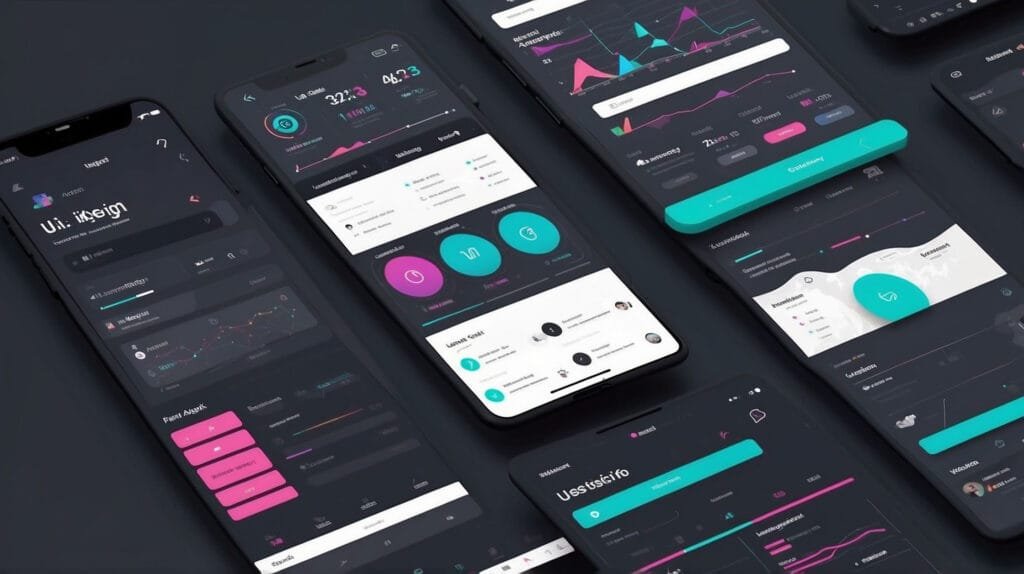Introduction: The Basics of UI/UX Design: A Guide for Beginners
In today’s digital age, creating seamless and visually appealing designs is more critical than ever. UI/UX Design plays a pivotal role in crafting user experiences that are both functional and delightful. Whether you’re an aspiring designer or a curious beginner, this guide will introduce you to the fundamentals of UI/UX Design and equip you with practical insights to kickstart your journey.
What is UI/UX Design?
UI/UX Design combines two interrelated disciplines: User Interface (UI) and User Experience (UX). While UI focuses on the visual and interactive aspects of a product, UX emphasizes the overall feel and usability. Together, they ensure that a digital product is not only attractive but also intuitive and user-friendly.
Key Differences Between UI and UX:
- UI Design:
- Focuses on aesthetics: typography, colors, and layout.
- Involves creating visual elements like buttons, menus, and icons.
- Ensures consistency and coherence in design elements.
- UX Design:
- Focuses on user flow and interaction.
- Involves research, wireframing, and usability testing.
- Ensures the product meets user needs effectively.
Why is UI/UX Design Important?
A well-designed UI/UX ensures:
- Enhanced User Satisfaction: Users are more likely to engage with a product that is easy to use and visually appealing.
- Increased Conversion Rates: A seamless user experience can lead to higher sales and retention.
- Improved Brand Reputation: Thoughtful design reflects professionalism and builds trust.
- Competitive Advantage: Good design sets your product apart in a crowded marketplace.
Principles of Effective UI/UX Design
Mastering UI/UX Design requires understanding core principles that guide the creation of successful designs:
1. User-Centered Design
Always prioritize the user’s needs and preferences. Conduct research to understand your target audience and tailor your designs accordingly.
2. Consistency is Key
Maintain uniformity across your design elements. Use consistent fonts, colors, and icons to provide a cohesive experience.
3. Simplicity and Clarity
Keep your designs simple and intuitive. Avoid clutter and ensure that users can navigate your product effortlessly.
4. Accessibility
Design for inclusivity by considering users with disabilities. Use readable fonts, provide alt text for images, and ensure contrast ratios meet accessibility standards.
5. Feedback and Interaction
Incorporate interactive elements like hover states and animations to guide users and provide feedback on their actions.
Tools Every UI/UX Designer Should Know
Starting your UI/UX Design journey? Equip yourself with these essential tools:
- Wireframing and Prototyping:
- Figma
- Adobe XD
- Sketch
- Graphic Design:
- Adobe Photoshop
- Canva
- Affinity Designer
- Collaboration and Handoff:
- Zeplin
- InVision
- Miro
- Usability Testing:
- Hotjar
- Maze
- UserTesting
Steps to Begin Your UI/UX Design Journey
Starting in UI/UX Design can feel overwhelming, but breaking it down into manageable steps can make the process smoother:
1. Learn the Basics
- Understand the differences between UI and UX.
- Familiarize yourself with design principles and methodologies.
2. Practice Wireframing and Prototyping
- Sketch out ideas using tools like Figma or Adobe XD.
- Create low-fidelity wireframes to map user flows.
3. Build a Portfolio
- Work on small projects or redesign existing apps/websites.
- Showcase your work on platforms like Behance or Dribbble.
4. Seek Feedback
- Share your designs with peers and mentors.
- Participate in design communities for constructive critique.
5. Stay Updated
- Follow UI/UX Design blogs and podcasts.
- Experiment with emerging design trends and tools.
Common Mistakes in UI/UX Design (And How to Avoid Them)
Even seasoned designers can make mistakes. Here are some common pitfalls and tips to avoid them:
- Overcomplicating the Design:
- Tip: Keep it simple and user-focused.
- Ignoring Accessibility:
- Tip: Test designs for readability and usability across diverse user groups.
- Neglecting Mobile Users:
- Tip: Adopt a mobile-first design approach.
- Skipping User Testing:
- Tip: Gather user feedback before finalizing your design.
Future Trends in UI/UX Design
The field of UI/UX Design is constantly evolving. Here are some trends to watch:
- Voice User Interfaces (VUIs): Integrating voice commands into designs.
- AI-Driven Design: Using artificial intelligence to personalize user experiences.
- Dark Mode: Offering alternative themes for better user comfort.
- Microinteractions: Enhancing user engagement with subtle animations.
Conclusion
UI/UX Design is the backbone of any successful digital product. By understanding its principles, mastering essential tools, and focusing on user-centric designs, you can create experiences that resonate with users. Whether you’re designing a mobile app, a website, or software, remember that simplicity, accessibility, and consistency are key to effective UI/UX Design.
Start your journey today, and unlock the potential to transform ideas into impactful designs!



